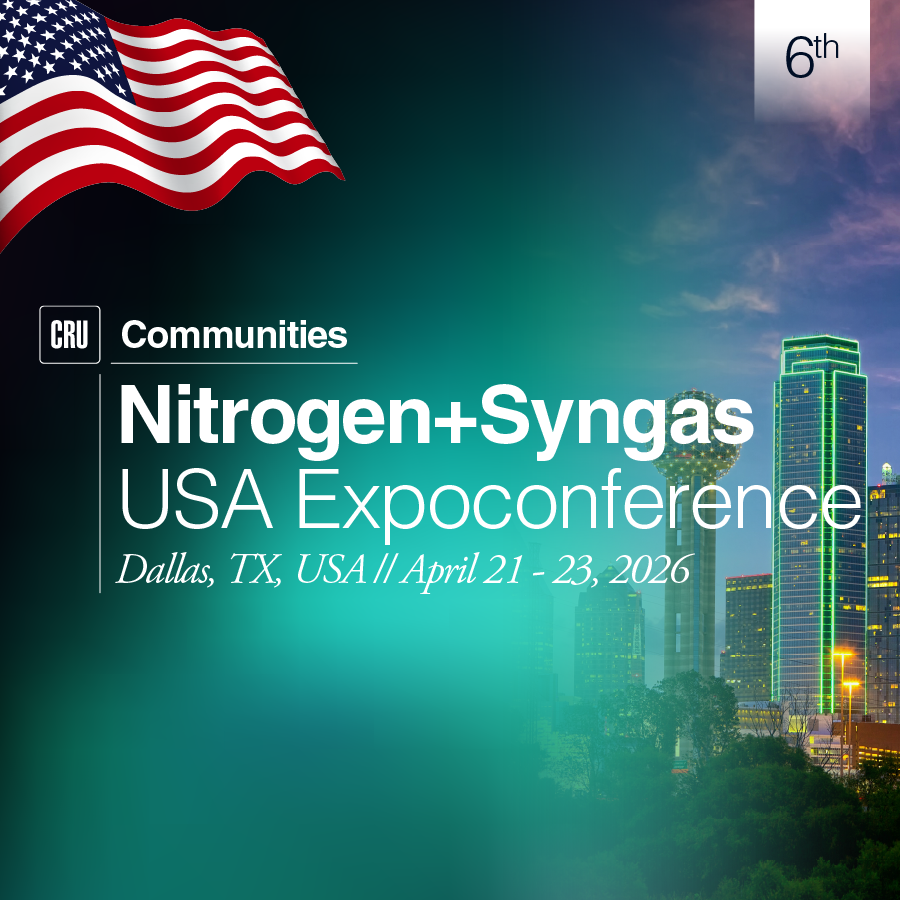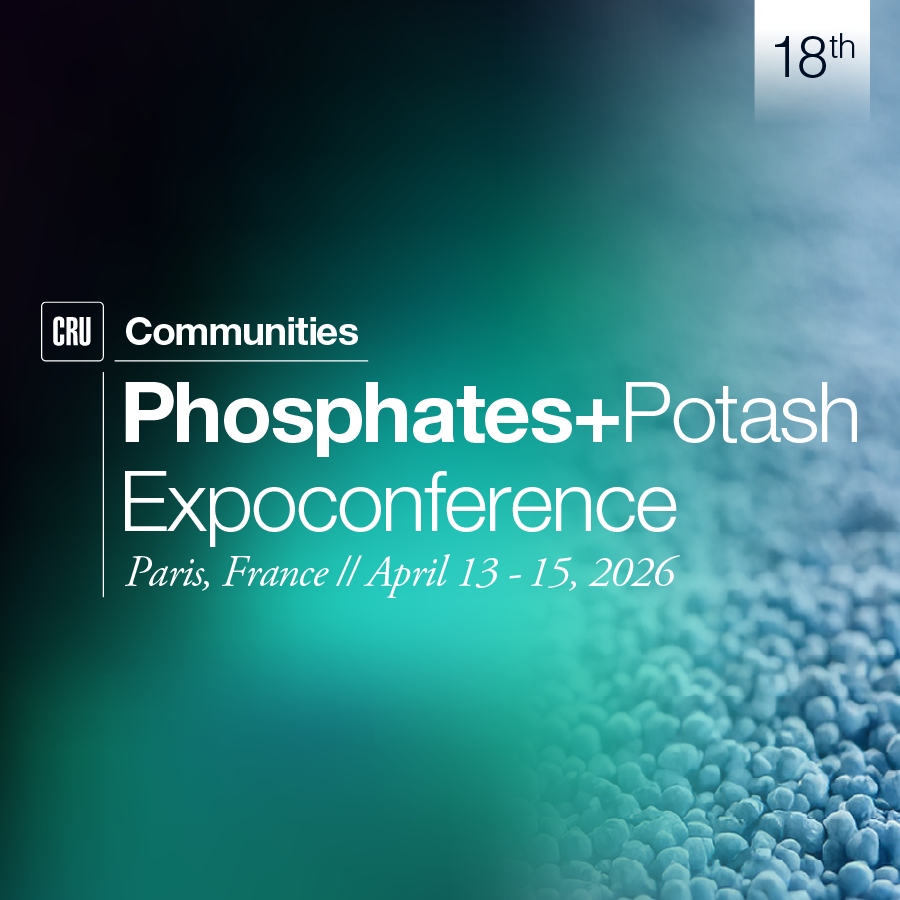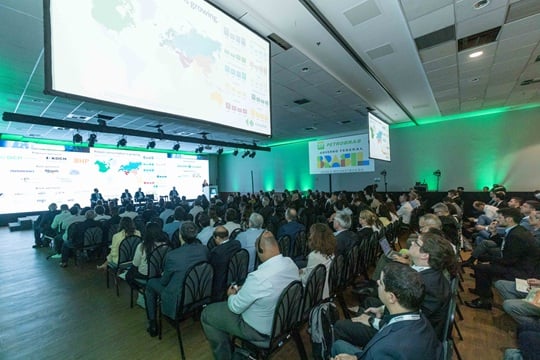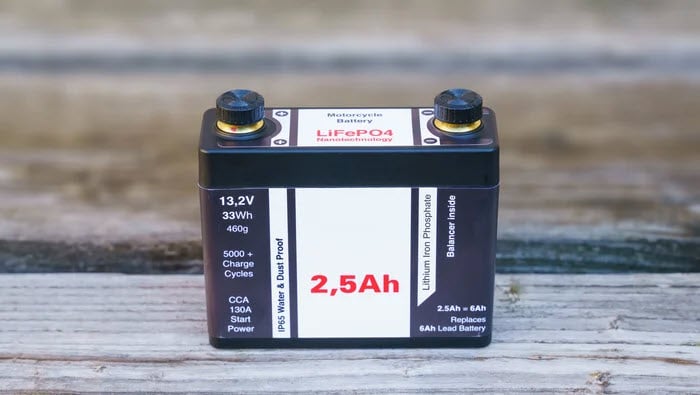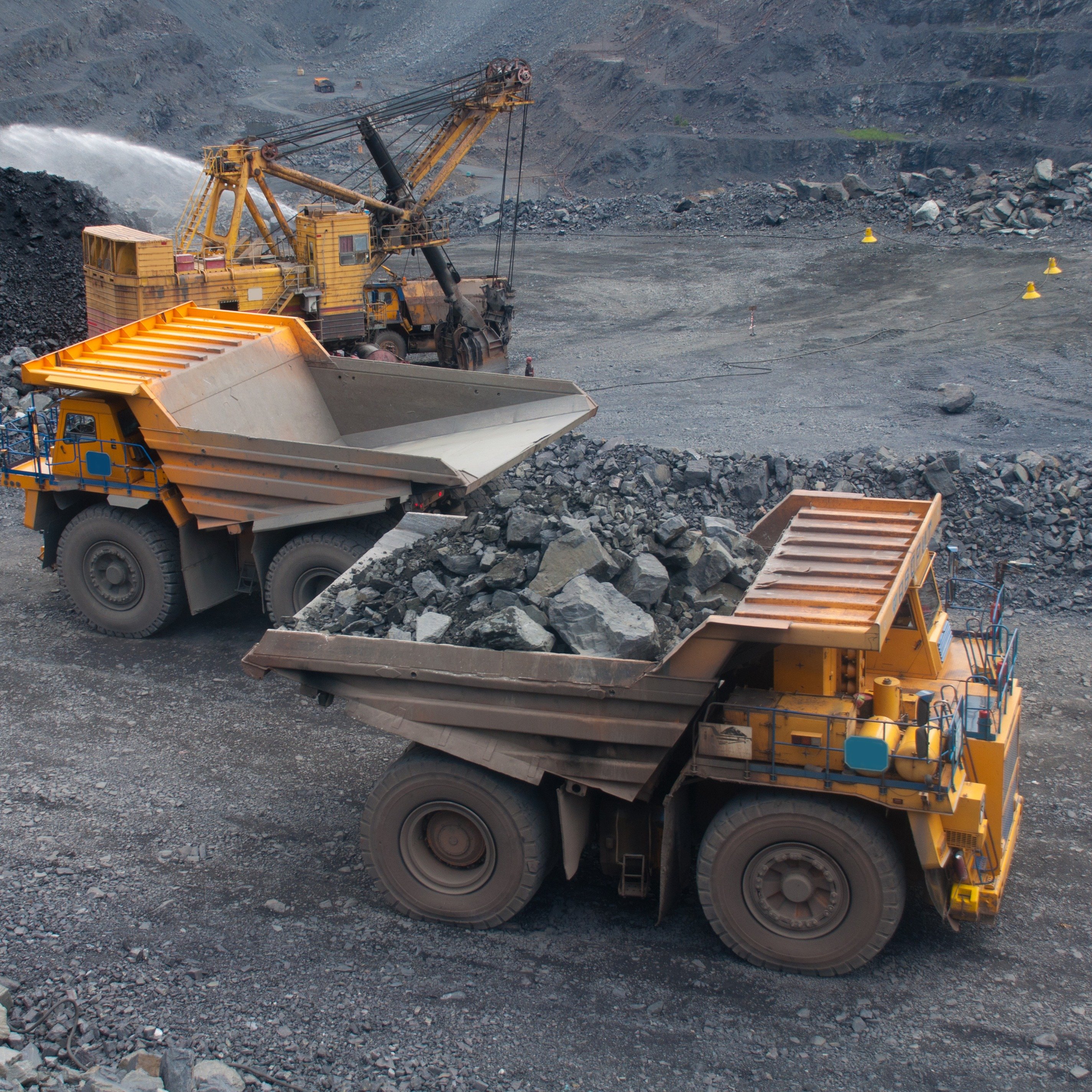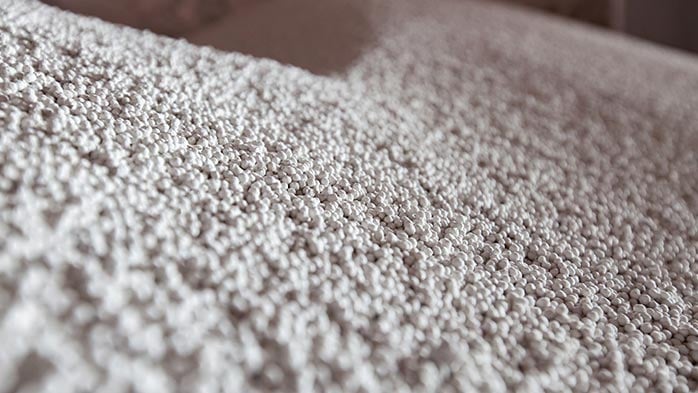This year’s International Fertilizer Association (IFA) flagship annual event was held in Montreal, Canada from 11th-13th June. The conference is an established platform for market discussions, building relationships and providing insight into near-term industry expectations.
Tony Will, CEO of CF Industries, set the tone appropriately when discussing global market volatility in the conference’s opening session. “There’s China, there’s weather, there’s all sorts of other stuff going on”. This insight summarises the market sentiment at the conference and the key findings from the CRU team’s conversations with market participants.
Ammonia and phosphate prices remained extremely bearish over the course of the conference, while the consensus on potash is that the flattened price developments are likely to continue in the short-term. Urea was the standout performer, with an Egyptian sale made during the conference raising the high-end of the price range.
The latest USDA crop progress report released on Monday 10th June prompted more positivity over the US market although producers remained cautious over how this would feed into a meaningful demand recovery by the end of the current season.
Despite an unprecedentedly difficult fall and spring application period in the US leading to high carry-over inventories, there was optimism around fertilizer demand for the 2020 crop. Corn futures have rallied, with the Dec-19 CME corn futures price ending last week at 463.4 c/bu, up from just 380.0 c/bu a month before - a 22% jump. These prices could be sustained if projections for lower yields and crop area are realised, helping to push corn planting well above 90 million acres next year.
There was little clarity over rumours that the Indian government was planning to include urea in the nutrient based subsidy scheme, with a representative of the Indian government offering ‘no comment’ when asked about this at the conference fertilizer demand session. Urea’s inclusion in the NBS would help to balance nutrient applications within India but would also pull fertilizer demand lower across all products in the initial stages of its implementation.
While there were few significant market movers during the conference itself, nitrogen producers OCI and ADNOC formally announced on Monday 17 June that they would be merging their Middle East and North African business units in a strategic partnership with 58% and 42% shares respectively.
Urea rides a wave of geopolitically driven price growth
The urea market was the beacon of hope for most fertilizer companies at the IFA conference given expectations of stable pricing in both the near-term and over the next two years. The CRU consensus on declining capacity additions, limited participation by the marginal exporter, China and resilient demand in emerging markets such as Brazil, India and Southeast Asia matched views across the industry. Generally, there were no expectations of significant global price declines over the remainder of the year, with most players in agreement with the recent CRU short term forecast.
Middle East (non-US netback) granular urea prices entered the week at $284-285/t FOB, with the low end rising by $4/t week-on-week, and traders appeared willing to pay more for forward Middle East positions. The rising price was also supported by a deal during the conference at $290/t FOB by Egypt’s Alexandria Fertilizer Co. (AFC) for 8,000 t granular urea, and subsequent indications of a similar sale by the producer at $295/t FOB for July loading. Several producers in the Middle East and North Africa commented on the lack of product available for sale until mid-July, suggesting a tight market in the near-term.
Suggestions of an Indian tender in the week ending June 2019 contributed to further bullish sentiment with wide speculations on import volumes varying from 500 kt to 1 Mt. In addition, the timing of deliveries expected by India will have a significant impact on pricing. If deliveries are requested for late July and August for significant volumes closer to 1 Mt, the “seasonal-lull” in expected urea pricing can be contained. It was widely recognised that Indian stocks were high, but import demand remains robust in 2019 with imports of 6.1 Mt expected as urea affordability levels in India remains attractive relative to other fertilizers and domestic production has been lower despite the commissioning of Chambal’s Gadepan III brownfield expansion in January 2019.
The majority did however agree that there could be some bumps along the path to recovery particularly founded in geopolitical concerns impacting Iran and China. The countertrade agreement between Iran and Brazil could see up to 1 Mt of urea being traded between the two countries in 2019 at substantially discounted prices to the FOB Middle East. We expect Iranian exports to Brazil to be limited to 700 kt given the difficulties associated with redistributing Iranian product within the country, but this increase will offset declining re-exports from Iran to China to other countries.
An additional downside risk to urea prices in the near-term is higher Chinese exports, given a declining cost floor, depreciating RMB and the end of the domestic demand season. Granular offers from China are expected to feature in the next Indian tender with prices similar to or slightly below the international urea price in the range of $280-290/t FOB. CRU expects Chinese exports to total 3.1 Mt in 2019, 700 kt higher than the previous year. However, there is further risk that China could export an additional million tonnes in Q4 2019 if the RMB continues to depreciate below its effective floor of 7 RMB/USD and if the Chinese government re-prioritises economic growth over the environment in the next winter heating season, enabling urea plants to run at higher than normal utilisation rates over the November-March period.
Ammonia fails to match positive urea sentiment while UAN price uncertainty looms
Ammonia price sentiment was incredibly bearish going into the conference, with the only hope for improved prices staked on forced production curtailments that have yet to be announced. Conversations with ammonia market participants were dominated with speculation over whether the price floor has been reached and discussion of which marginal producers would be the first to step in and announce supply adjustments.
There was still a level of disagreement over whether ammonia prices have reached their floor by the end of the week. A handful of participants felt that the pipeline of plant curtailments booked for July and August will help shore up prices while others conceded that further decreases of $5-10/t west of Suez is on the cards – with the latter being in line with CRU’s latest short-term price forecast. In particular, suppliers were hoping that Algerian exporter Sorfert’s plan to shut its merchant ammonia line for four weeks from June 21 will spur other producers selling ammonia at close to cash costs to follow suit.
Some UAN market participates at the conference expressed surprise at the recent strength in European price, noting that the gains could be more due to nervousness over a firming urea market and recently imposed UAN anti-dumping duties than a short-term need to purchase UAN.
The accelerated corn sowing reported in the US had begun to boost confidence in US UAN demand by the close of the conference, although the NOLA price only recovered by a relatively modest $5/st week-on-week.
Phosphate market downbeat on 2019 price prospects
Phosphate players were somewhat exasperated throughout the conference. Prices have plunged since October 2018 and there is no sign of this abating in the short-term. Chinese export volumes and Indian demand and subsidy rates were key talking points.
The outlook for China was unsurprisingly the biggest question looming over the market. It was widely recognised that most Chinese producers are selling below cash cost levels. Most players quizzed expect FOB China prices to bottom out at a minimum of $330/t FOB China, after starting the conference at $345-350/t FOB. While there were some suggestions of small production cuts from YTH, more significant volumes will need to be announced to balance the market.
There was some clarity over the recently announced merger between Chinese phosphate giants Kailin and Wengfu. The two companies will merge by 22 June under the name of Guizhou Phosphate Chemical Group.
Views on Indian demand throughout the second half of the year were divisive. It was widely recognised that Indian stocks were high, but there was some confusion as to just how high, following changes in reporting by the FAI earlier this year. Nevertheless, immediate import demand remains robust as Indian buyers try to secure volumes before a possible reduction in the nutrient based subsidy for phosphate fertilizers.
There were some positives, particularly west of the Suez Canal. There were expectations for strong buying in Brazil over the coming weeks, with higher soybean prices and lower MAP prices moving the barter ratio to more favourable levels. Immediate demand in Eastern Europe and the CIS was also said to have been strong.
Generally, there were no expectations of global price rises over the remainder of the year, with most players in agreement with the recent CRU short term forecast.
Potash market focus turns to price preservation
Potassium chloride market sentiment at the conference was noticeably more bearish compared to a year ago in Berlin. The overarching theme among both consumers and producers was that affordability had deteriorated significantly in several key import markets, particularly Southeast Asia.
With many watching the plummeting prices in the phosphate fertilizer market, the focus of producers had turned to preserving prices at current levels for as long as possible. This is particularly crucial in the MOP industry as spot prices and their trajectory set the tone for the Chinese and Indian import contract negotiations. It is of note, however, that Fertilizer Week assessed the key granular MOP CFR Brazil spot price down an average of $5/t during the conference at $335-345/t CFR.
Following the delayed settlement in 2018, with China not agreeing until September at $290/t CFR – and heavy arrivals continuing throughout May – it transpired that the Chinese import consortium and exporters had, unusually, not formally begun negotiations prior to the conference. This makes a delayed settlement in 2019 highly likely once again. However, discussions with a key importer from the importing consortium revealed that the Chinese government was considering forcibly halting contracted MOP imports at the end of June despite numerous optional volumes having been agreed. The company also revealed that port inventories had risen above 2.7 Mt as weak domestic demand and declining port wholesale prices limited inland sales of imported product. Producers are eagerly awaiting the outcome of a major tender in Indonesia which should provide some clarity on market fundamentals.
As has become the norm with Fertilizer conferences in recent years, there was once again significant interest in the specialty potash sector, particularly SOP and SOPM, with numerous junior mining companies promoting their projects.
At the forefront of discussions was Sirius Minerals, which is constructing its Woodsmith polyhalite mine in the UK. During the conference the company announced a new take-or-pay agreement for its POLY4™ product. Sirius has agreed to supply up to 1 Mtpy to IFFCO in India – with an option to expand this to 1.25 Mtpy – marking the company’s first offtake in South Asia, one of the world’s largest fertilizer markets.
In the SOP market, discussions were dominated by the rise in Chinese export volumes following the removal of self-imposed export tariffs at the start of the year. Though a little-used geographic divide in the potash market, there was a distinct division in sentiment East and West of the Suez Canal. In Europe, SOP prices have firmed despite the export shake-up as freight rates largely insulate the region from Chinese product. However, in the Asia-Pacific region Taiwan’s SESODA (a Mannheim route SOP producer) has had to moderate operating rates following the increased shipments from China.
Feedstock markets soften in the wake of faltering economic growth
Gas prices have tracked the darkening outlook for energy in the context of faltering economic growth from the trade dispute between US and China. Spot natural gas prices declined to new lows at the IFA Montreal conference both in the US and in Europe. This was a result of the increased LNG supply and exports from the US, slowing demand for LNG from China as a consequence of the US-China trade war. This together with increased exports from Russia’s Gazprom to Europe has resulted in a battleground for market share in Europe. Lower gas prices have lowered nitrogen production costs, particularly in Europe, enabling producers such as OCI, Yara and even Achema in Lithuania to be more competitive year-on-year.
Anthracite coal prices in China have followed a similar downward trajectory, increasing concerns over the cost floor for the marginal nitrogen and phosphates producers in the region. The CRU view is that energy costs will rise modestly towards the end of the year as the “winter-heating” season resumes and demand for energy is revitalised amidst assumptions of expansionary monetary policies in China and the US supporting a recovery in global economic growth rates.
Market sentiment mostly in line with CRU view
CRU’s popular breakfast briefing on Wednesday 12 June covered the outlook for energy, nitrogen, phosphate and potash markets in an increasingly uncertain geopolitical climate. Attendees were broadly in alignment with the market view presented by the team, although as always there was plenty of time for discussion and debate beyond our scheduled hour slot. We look forward to doing it all over again next year!




